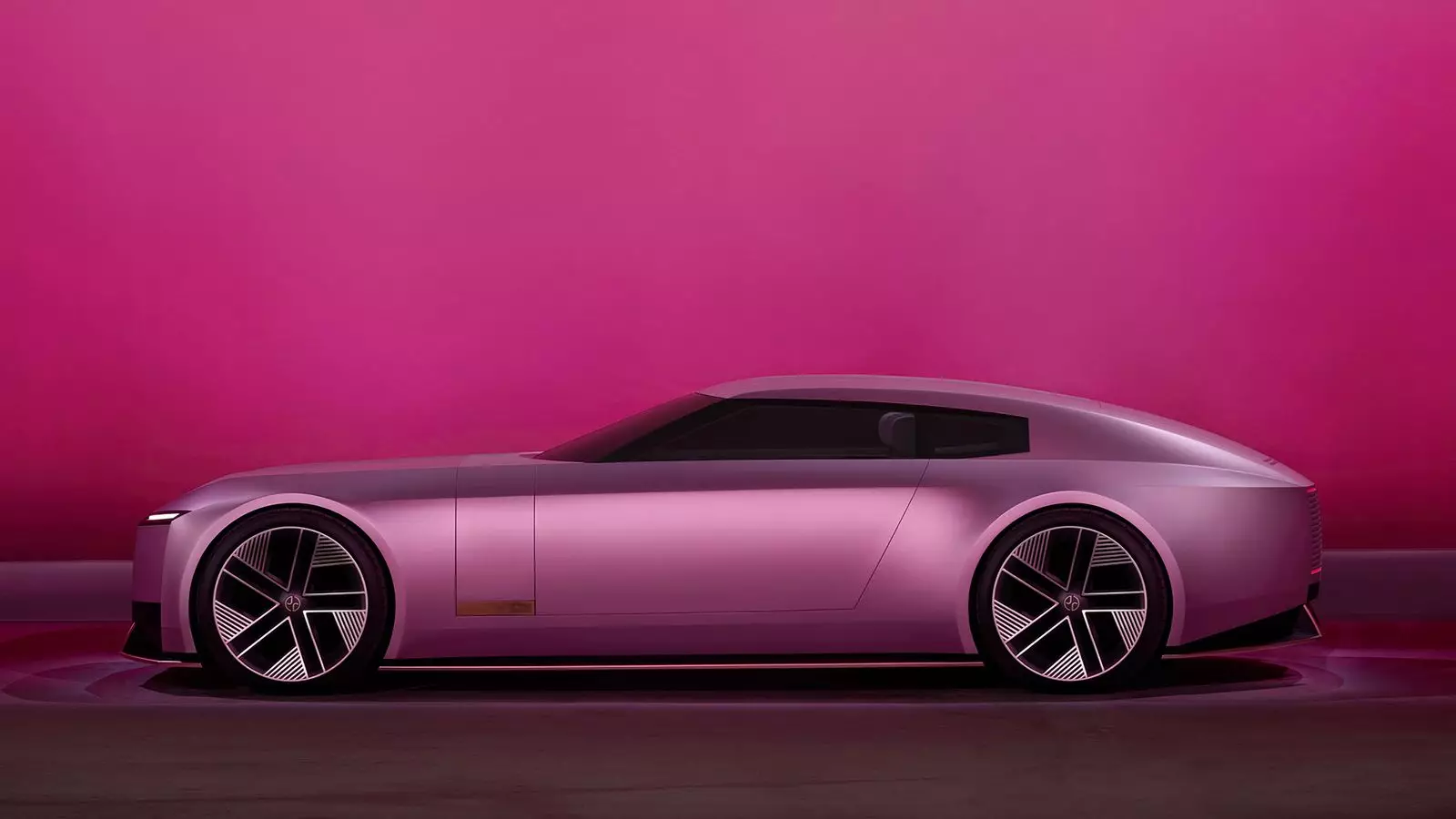Jaguar, the iconic British car manufacturer renowned for its blend of luxury and performance, is embarking on a transformative journey towards full electrification. The company recently made headlines with a radical rebranding strategy, prompting managing director Rawdon Glover to articulate a vision that aims to redefine both the brand and the electric vehicle (EV) market. As Jaguar unveils its ambitious Type 00 concept, the emphasis is clearly on boldness and disruption—qualities that have historically set the brand apart. This strategic pivot is not merely an evolution; it represents a significant cultural shift aimed at signaling Jaguar’s serious commitment to the increasingly competitive EV landscape.
The rebranding sparked considerable debate, with critics questioning whether the decision was in keeping with Jaguar’s storied heritage. Glover’s candid responses to recent criticisms reveal an awareness of the delicate balance between honoring the brand’s legacy and innovating for the future. The managing director underscored the goal of making Jaguar relevant and desirable for generations to come, as the automotive industry confronts myriad technological changes. The focus is not only on electric powertrains but also on enhancing the brand’s overall identity in a fast-changing market.
At a recent showcase in Miami, Jaguar introduced the Type 00, a concept car characterized by its striking visual design and bold aesthetic choices. The dual color palette of Miami Pink and London Blue aims to resonate with contemporary tastes while promising an exhilarating driving experience. However, what sets the Type 00 apart from its predecessors is the dedicated platform designed to maximize electric performance, claiming an impressive range of up to 478 miles and the ability to add 200 miles of charge in just 15 minutes. Such specifications not only compete effectively with industry leaders but also position Jaguar as a formidable contender in the EV market.
The ambitious intention behind the Type 00 hints at a production-ready version anticipated to launch by late 2025. While concrete pricing details remain elusive, initial predictions suggest a starting figure exceeding £100,000. The strong emphasis on luxury indicates Jaguar’s intention to maintain its status as a premium vehicle manufacturer. However, such pricing also raises questions about accessibility; will the reimagined Jaguar merely cater to affluent consumers, or can it also attract a broader audience intrigued by modern electric alternatives?
The marketing campaign surrounding the rebrand faced substantial backlash, particularly due to an advertisement that features models over vehicles, prompting many, including prominent figures like Nigel Farage and Elon Musk, to lambast the approach. Glover’s insistence that Jaguar desires to engage in meaningful dialogue rather than alienate its loyalties reflects an acute understanding of the importance of customer perception. His acknowledgment of the need for a “reasoned debate” on the brand’s evolution demonstrates a recognition of the broader context in which consumers are navigating their choices.
Critics may argue that the campaign’s futuristic theme distanced Jaguar from its traditional fan base; yet Glover remains resolved to create inclusivity without compromising the brand’s allure. His statements about wanting to attract new audiences highlight a strategic gamble that could either elevate the brand to new heights or lead to further alienation among long-time enthusiasts. The automotive industry is rife with examples of companies that have miscalculated public sentiment during transitions, making it imperative for Jaguar to tread carefully.
As the conversation shifts towards the design and technological prospects of future Jaguar offerings, the focus now is on building excitement and anticipation for what lies ahead. Glover’s assertion that Jaguar must adapt to remain relevant in a rapidly evolving landscape illustrates an awareness of the industry’s pressing need for innovation. It also encapsulates the essence of the struggles automotive brands face today: how to sustain traditional elements while innovating for a new age dominated by electric alternatives.
Ultimately, Jaguar’s journey into electrification represents far more than a practical transition; it is a chance for the brand to reclaim a narrative of innovation rooted in its rich history. As the world progresses towards sustainable technologies, Jaguar’s bold approach may yet carve out a distinct space in the electrified automotive landscape—one that ultimately pays homage to its legacy while boldly pursuing the future. Time will tell if the gamble pays off, but for now, the road ahead appears paved with potential.


Leave a Reply